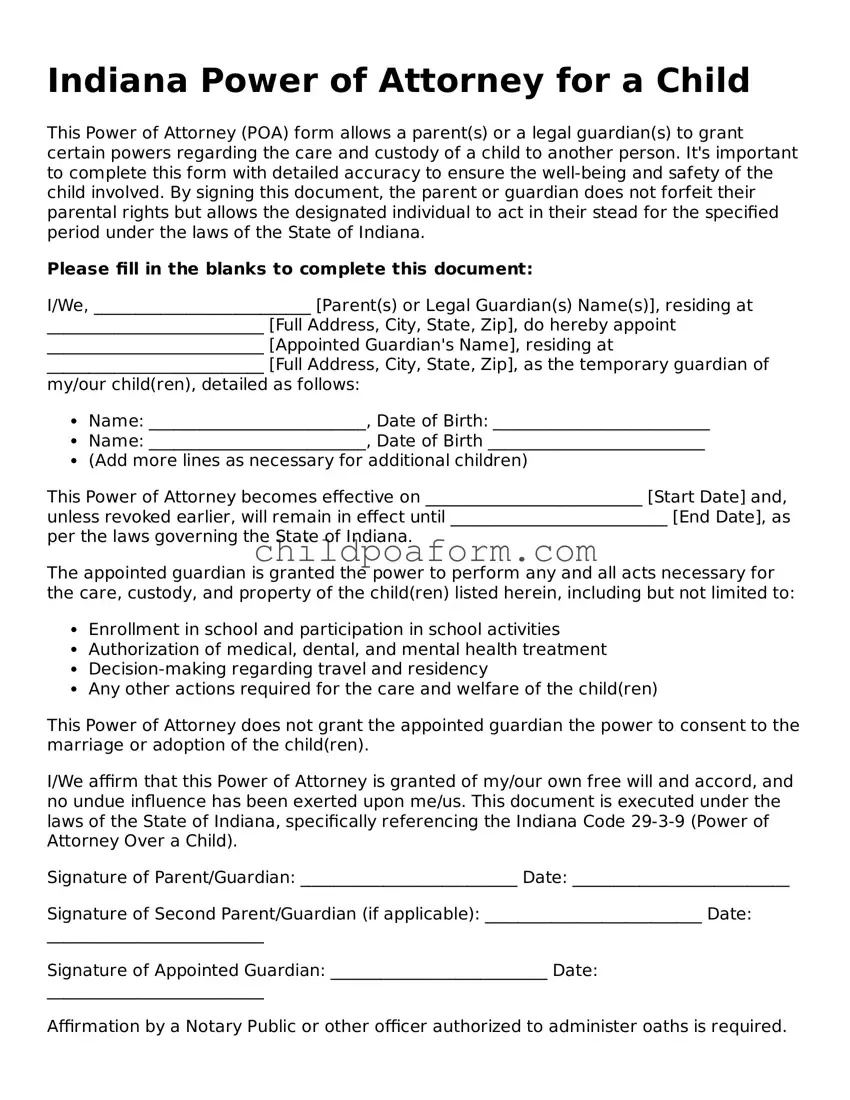Instructions on Utilizing Indiana Power of Attorney for a Child
Filling out the Indiana Power of Attorney (POA) for a child is a significant legal step. It allows a parent or guardian to grant another individual the authority to make decisions on behalf of their child. This could include decisions regarding education, health care, and general welfare. The process requires thoughtful consideration and clear communication between all parties involved. Once completed, this document ensures that the child's needs can be met by someone they trust, even in the absence of their primary guardian.
- Start by gathering all necessary information including the full names and addresses of the parent(s), the appointed guardian, and the child(ren) involved.
- Read through the entire form first to understand the scope of authority being granted and any specific instructions provided.
- At the top of the form, enter the date on which the POA will become effective. Typically, this is the date on which the form is being filled out.
- In the section designated for identifying information, fill in the names and personal details of the parent(s) or legal guardian(s) along with the appointed guardian. This section solidifies who is transferring the authority and to whom.
- Specify the child or children’s names and dates of birth to clearly identify who the POA concerns.
- Describe the scope of the appointed guardian’s powers. This involves detailing what decisions they can make on behalf of the child. Be as specific as necessary to ensure there’s no confusion about their responsibilities and limits.
- If the POA is intended to have a specific timeframe, note the start and end dates. If it's intended to remain in effect indefinitely, or until a certain condition is met, specify this clearly.
- Both the parent(s) or legal guardian(s) and the appointed guardian must sign the document. Depending on local requirements, these signatures may need to be notarized to validate the form.
- It’s important to discuss the arrangement with anyone who might be affected, such as family members or the child’s current caregivers, to ensure they understand the change.
- Keep copies of the completed POA in a safe but accessible place. Provide a copy to the appointed guardian and any institutions (such as schools or medical facilities) that might need it.
After the form is fully completed and signed, it represents a powerful legal agreement. While the primary goal is to ensure the child’s well-being, it’s recommended to review and possibly update the document periodically. Life changes, such as moving to a new state or changes in the guardian’s ability to serve, may necessitate adjustments to the POA to ensure it remains in the best interest of the child.
